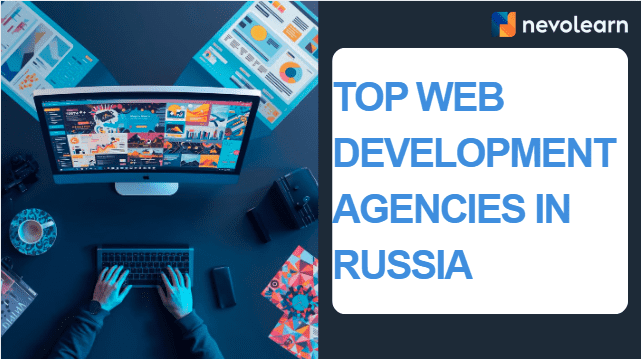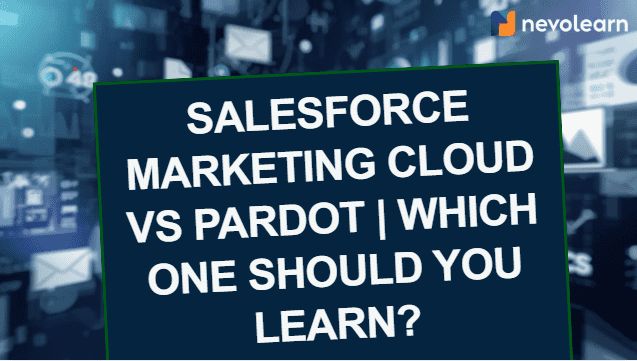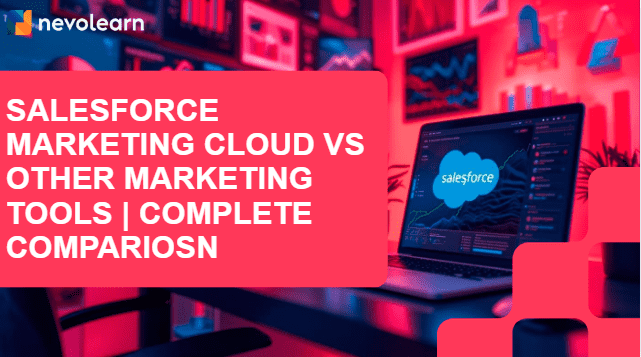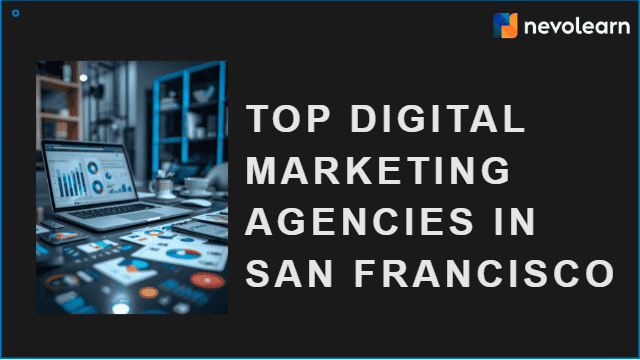
Up To 30% Off On All Courses*


 Data-Driven Personalization with Salesforce CDP and Einstein GPT
Data-Driven Personalization with Salesforce CDP and Einstein GPTWe should start this blog post by stating that Salesforce CDP and Einstein GPT are a match made in marketing heaven. With the improving expectation of customers these days that a brand should know them, this combo has started working wonders for some brands. The level of personalization that this combo provides does not just happen magically. Rather, it is built on smart automation and dependable customer data. This is where Salesforce CDP (Customer Data Platform) personalization emerges. Above all, this platform is now supercharged with Einstein GPT's intelligence.
As a responsible business owner, you might have felt how to make customer experiences feel more timely, relevant, and human. This blog will provide you with the answer. Yes, we are getting deep into how Salesforce CDP and Einstein GPT together help brands turn raw data into customized gold.
Salesforce CDP – An Introduction
You can think of Salesforce CDP as a super-smart brain that brings together all data related to customers from different sources. Examples of these sources include social media, e-commerce, email, and CRM. Yes, it builds a dynamic single profile for every customer. Apart from gathering data, it organizes and activates the data.
Now, when talking about Salesforce CDP personalization, we mean using these rich profiles of customers to personalize every single communication with them. The communications can be any form, like mobile notifications or emails, to even web experiences. This communication happens based on real-time data.
Einstein GPT – An Introduction
If you would like to achieve more personalization at Scale, Einstein GPT will help. It is the generative AI engine of Salesforce that works with OpenAI’s GPT with your customer data for the creation of ultra-customized content across commerce, marketing, service, and sales. It helps marketers draft email copy and dynamic product suggestions. It even builds predictive models that are customized for the individual needs of customers.
So, when Einstein GPT pairs with Salesforce CPD, you are not just gathering data. Yes, you are telling automated and intelligent stories.
Why The Combo is A Game Changer?
You might wonder why the integration of Salesforce CDP and Einstein GPT helps marketers. Not only marketers, customer service, and sales teams together say Where have you been so long to this combo. Here are some factors that make this combo a game changer:
Unified Customer View
With this combo, there will not be any data silos after adopting. The reason is that Salesforce CDP gathers and reconciles fragmented data into a single cohesive profile. It will be easy when you can see all the in-store purchase history of your customers alongside their recent email communication, isn’t it? Yes, you can serve customers better without any delays with this combo.
Real-time Customization
CDP updates customer profiles in real-time. So, in case a customer browses a new product category today, you can send them customized content related to that category. Moreover, this can be done within minutes and not days.
AI-Generated Content at Scale
With Einstein GPT, your marketing team does not need to write 50 email variations manually. The Artificial intelligence does it for them. It can draw on a unified profile in the CDP for the creation of customized messaging.
Predictive Intelligence
Apart from customization based on what customers have done, Einstein GPT can predict what customers might do next. It means that you can make relevant and proactive offers with Einstein GPT by your side.
Real-World Example
Let’s imagine that you own a sneaker shop online. A new customer named Ritha visits your online store and browses a pair of brown sneakers. Also, she signs up for your newsletter. Here, Salesforce CDP quickly updates her profile with her interest in the pair of black sneakers. Now, Einstein GPT steps in and sends an email to Ritha stating, “Hi Ritha, we observed you’ve been eyeing some black kicks - how about 10% off your favorite pair of sneakers?”
This communication sent by Einstein GPT is not only timely but is also data-driven, helpful, and contextual. This is the power of customization done right away, making the customer feel special. Here is a table to better understand how this combo works:
|
Feature |
Salesforce CDP + Einstein GPT |
|
Security |
Built-in compliance, trust, and government tools |
|
Scalability |
Handles millions of interactions and profiles with ease |
|
Ease of Use |
Drag-and-drop tools and no-code/low-code interfaces |
|
Depth of personalization |
AI-generated, behavior-driven, and context-aware |
|
Data Integration |
Real-time deep connections across the Salesforce ecosystem |
Above all, everything lives in a single ecosystem. It means that you will need less time stitching tools together. So, you will get more time building killer campaigns.
Best Practices in Customer Data Platform (CDP)
So, now, you know how technology helps marketers and sales teams. However, here is the truth. Even the best tools need the right strategy from your end. So, you should follow some Customer data platform best practices to ensure that you make your customization efforts pay off:
Define Clear Goals for Customization
Before you start using CDP data, you should ask yourself a question. “What is the end goal?” Are you intending to reduce churn, boost cross-sales, or improve email open rates? When you have clear goals, you can define the right data and metrics to pay attention to.
Focus on Quality of Data Rather Than Quantity
Naturally, you will feel tempted to include every data point. However, quality always beats quantity. Ensure that the data you gather is up-to-date, accurate, and most importantly, useful. If the data you gather is bad, the personalization will also be a bad experience for your customers.
Establish Strong Privacy and Consent Protocols
You might have heard about the CCPA and GDPR regulations. With these regulations in place, handling customer data responsibly is not only ethical but is also mandatory. It is better to always be transparent about data usage. Also, ensure that your customers get easy opt-out options.
Smart Segmentation
Remember that not all customization needs 1-to-1 personal messaging. In most instances, segment-based customization can be effective. For instance, you can use psychographics, demographics, and behavioral data to create meaningful and worthy segments.
Test, Comprehend, and Iterate
Not only human intelligence but also artificial intelligence needs tuning. For this, you can rely on A/B Testing. With this testing technique, track what works and test your customized content. Also, ensure that the content is continuously optimized based on test outcomes. Over time, Einstein GPT learns from engagement data. Also, it gets better at generating content that resonates with your customers.
Salesforce CDP Personalization – How to Get Started?
Are you starting from scratch? Nothing to worry, here is a quick roadmap to get your Einstein GPT and Salesforce CDP journey off the ground:
Begin By Auditing Your Existing Data
Auditing your existing data is the first step. Check where your customer data is stored presently. The data might be stored in an email platform, website analytics, or CRM. Take stock of all data sources and spot gaps.
Connect your Ecosystem
You can use Salesforce’s Native connectors and APIs to pull in customer data from all touchpoints. Examples of these touchpoints include mobile, commerce, service, sales, etc.
Create Unified Customer Profiles
Salesforce CDP uses identity resolution techniques. The purpose of these techniques is to merge customer data into a single profile. This is the magical moment in which siloed data turns actionable.
Define Segmentation Strategy
- You can begin with some key use cases and personas
- Enable AI content creation in Service Cloud or Marketing Cloud
- Document your customer journey, content rules, brand voice, and tone touchpoints.
Common Pitfalls to Avoid
Even with powerful tools like Einstein GPT and Salesforce CDP, mistakes are likely to happen. You can watch out for:
- Siloed Teams: Ensure that service, sales, and marketing teams stay in line with customer insights.
- Lack of Human Oversight: Do not forget to review AI-generated content for context and tone.
- Poor data hygiene: When the data is bad personalization experience will also be bad.
- Overpersonalization: At times, customers may be creeped out by overly particular messages.
Final Thoughts – Personalization at Scale is Now Possible
Some years ago, delivering highly customized messages to millions of customers would have needed a group of marketers, data analysts, and copywriters. But today, with Salesforce CDP Personalization and Einstein GPT, it is not only possible but is also shockingly efficient, intelligent, and scalable. You might be a retail brand, a financial institution, or a SaaS business owner. The thing to remember here is that the power of data-driven personalization and real-time customization is within reach. You just require the right platform, appropriate AI, and a bit of strategy.
- Salesforce CDP gathers and combines customer data for creating actionable and smart profiles
- Einstein GPT uses artificial intelligence for the generation of customized content like product copy, chat replies, and emails
- Together, they deliver the most powerful data-driven customization across the whole customer journey.
- Follow customer data platform best practices to ensure effective segmentation, clean data, and AI that truly connects with your audience.
Are you still wondering if your business is prepared for this level of customization? If you have low engagement rates, generic content, and fragmented data, it might be time to plug into the power of Einstein GPT and Salesforce CDP.
Want to Level Up Your Skills?
EXPLORE BY CATEGORY
End Of List
No Blogs available Agile









